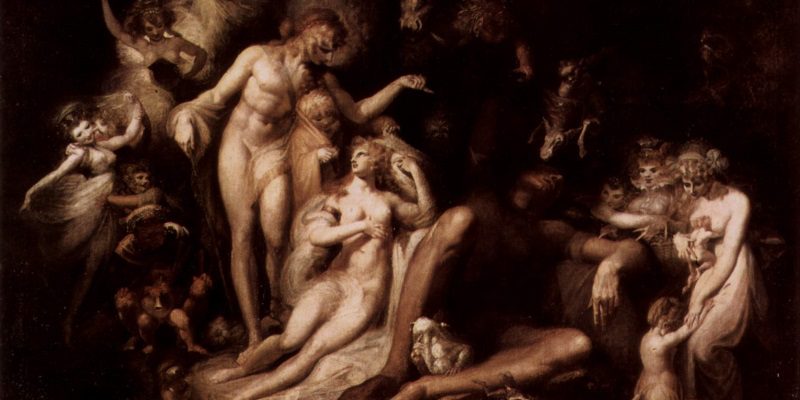The Artificer Class, Part Two

Welcome back to the History of the Artificer. Here in the third* article, we’re finally going to see a version of the class that is called an artificer, and is 100% different from the Clockwork Mage kit and the tinker class.
*sometimes we count like programmers
Part Zero | Part One | Part Two
Eberron Campaign Setting (3.5)
The theme presented here leans all the way into replacing technology (steam, clockwork, whatever) with magic. The artificer is a technician of magic items, including PCs who are magic items – that is, the warforged. This facility with magic items includes using magic items they normally couldn’t. I’m pretty sure this is the iteration of the concept that got its hooks into the D&D fanbase’s collective imagination, more than any other.
For any of this to make sense, permit me to refresh your memory of magic item creation in 3.x. Each category of magic item is its own feat that the spellcaster needs to pick up, which is why the artificer and a number of other classes get some item-creation feats as bonus feats. Buying the feat is permission to spend time, gold, and the spellcaster’s own experience points, but you probably have some number of other prerequisites to fulfill: just about everything has a minimum caster level, but many items also require that you cast specific spells for each day of work. Got that? Feats, time, gold, XP, character level, spell prereqs. The artificer is going to move the needle on several of those.
- d6 Hit Dice. Within 3.5, this is slightly sturdier than other arcane casters, and on par with rogues.
- 4 + Int modifier skill points, from a knowledge-and-technology list.
- It’s a dual-stat class, more or less: Charisma for their Use Magic Device checks, Int for the effectiveness and extra uses-per-day of their infusions. Infusions don’t use a lot of saving throw DCs, so Int is less critical in that regard, but you still can’t neglect it or you’re missing out on extra spell slots. (They’re called infusions, they’re the same as spells, whatever.)
- +3/4 BAB, which is on par with a rogue.
- Poor Fortitude and Reflex saves, good Will saves.
- Proficiency with simple weapons, light and medium armor, and shields.
- Infusions are one of the artificer’s core mechanics. You gain more and higher-level slots on a schedule that looks idiosyncratic – it tops out at 6th level spells like a bard, but it does so at 14th level rather than 16th, has fewer slots at the top end, and gains 2nd– and 3rd-level slots unusually fast for a partial caster class.
- Anyway, you also don’t have spells prepared or spells known for infusions – you know and cast the whole infusion list spontaneously. It’s not a huge list by spell-list standards, but considering that you can cast any of them you have slots for, it’s vast. I’d expect problems with choice paralysis for players without serious system mastery.
- For the most part – less so at higher levels – you want to cast infusions outside of combat, because they have 1-minute casting times. You can spend an action point to hurry that up to 1 round, but keep in mind that action points are a per-level currency in 3.5 Eberron.
- Thematically, you’re creating short-term magic items for most of these.
- Craft Reserve is a pool of fake experience points that you can burn first in lieu of your own XP. You can’t carry them over from one level to the next, so you’re probably going to waste a bunch of them as you go. (That is nails on a chalkboard to me as a player.) The amount you get scales up at each level, from 20 at 1st level to 5,000 at 20th. This is a big neon signpost reading “AVOID this class if your DM doesn’t build in lots of downtime.”
- Artificer Knowledge lets you roll a special check to determine whether an object you’re touching is magical. It’s only the yes/no function of detect magic, all day long.
- Artisan Bonus grants a +2 bonus on Use Magic Device rolls if you have the feat that lets you make that type of item. That’s an unusual scaling mechanic for a feature, but a sensible one.
- Disable Trap lets artificers be your team’s traps rogue. I really most sincerely don’t miss this quirk of 3.x Disable Device.
- Item Creation (feature name, not action) deals with how the artificer creates items without having to meet all of the normal prerequisites. You can fake spell prerequisites with a Use Magic Device check, and you can partially cheat the level requirements. You count as two levels higher for creation requirements, but not for spell effect calculations.
- As the example spells out, a 3rd-level artificer can make a fireball scroll (that otherwise requires a 5th-level sorcerer or wizard), but it only deals 3d6 damage (because fireball deals 1d6/caster level up to 10 in 3.x).
- For reasons I don’t really grasp, infusions that mimic spell effects don’t satisfy spell prerequisites. I guess they just really want you to make some Use Magic Device rolls for your item creation.
- Scribe Scroll is your first free item-creation feat and the last of your 1st-level features.
- I’m going to list the rest of the item-creation feats and their levels together, just for brevity’s sake: Brew Potion at 2nd level, Craft Wondrous Item at 3rd, Craft Homunculus (an artificer-only special case of Craft Construct) at 4th, Craft Magic Arms and Armor at 5th, Craft Wand at 7th, Craft Rod at 9th, Craft Staff at 12th, and Forge Ring at 14th. Craft Homunculus does let your homunculus get a good bit cooler than a standard homunculus, if you really pour work into it. Each extra Hit Die is 2,000 gold and 160 XP, so have fun.
- Artificers also get bonus feats, chosen from a short list of magic-item-interaction options. They get these at 4th, 8th, 12th, 16th, and 20th
- Retain Essence at 5th level lets you melt magic items down for XP, which get stored in your craft reserve – and are lost if you level before spending them, as with all of your craft reserve. That’s a deeply regrettable decision, because of how little control the player has over when action happens and they earn XP. It’s interesting to see the 3.5 precursor to 4e’s residuum, totally setting aside residuum’s World of Warcraft It’s a fine idea, but the implementation ignores a lot of the gameplay realities of pacing and leveling.
- That said, the loot-distribution expectations in 3.5e involve receiving a lot of stuff you don’t care about as much, and either lucking into, buying, or making the thing you do This gives you another way to extract maximum shareholder value from those flavorful but not obviously powerful items that your DM hopes you’ll enjoy. (If this sounds cynical, well, I think the reasons explain themselves.)
- Metamagic Spell Trigger at 6th level lets you add metamagic effects (that is, from metamagic feats) to wands and other spell-trigger items you create. This also involves spending more charges from the wand. There might be some options that are worth something here, but I don’t know what they are, and it’s a decision you make at the time you create the item, not during combat. It’s deep system-mastery stuff.
- Metamagic Spell Completion at 11th level lets you add metamagic effects to scrolls and other spell-completion items, for a fairly eye-popping increase in the Use Magic Device crafting DC. Because you’re making one-shot consumables, it’s at least easier to feel like you’re making a good decision: you’ll want this consumable once (as a scroll), but will you want it 15-20 times (as a wand)?
- Skill Mastery at 13th level lets you take 10 on Spellcraft and Use Magic Device checks, even under stress. If you’ve done it right, taking 10 is enough to succeed almost everything you need to do for Use Magic Device; if not, recalibrate your plans until it does.
This list of features doesn’t really suggest what artificer gameplay looks like in action scenes, so I’ll tell you: you use a lot of wands, and make Use Magic Device checks every time. You can also pile on infusion improvements to your weapon and armor and wade into combat, but d6 Hit Dice doesn’t make that a particularly promising route. It also means you need either good Strength or good Dex in addition to your good Int and Cha. So… probably not that.
Overall, the mechanics rely on a very strong working knowledge of which books of magic items and weapon, armor, and shield enhancements your DM allows in the campaign. As I mentioned earlier, the class is in very bad shape without a lot of downtime. It’s very common, in my experience, to gain two or more levels in the course of an adventure, without significant downtime along the way. For an artificer, that’s effectively denying them their class features, and a whole level or more of craft reserve points are just lost.
The super fun thing about a class like this is having a vast bag of tricks tucked away. It sets you up to be Batman, or at least Lucius Fox; if not James Bond, then at least Q. Thematically, you’re even Tony Stark; mechanically… you could probably make that happen. Given time, you can imitate a staggering range of spells and magic item effects. We won’t see another artificer go anywhere near this far in breadth of options.
One last thing: the feats you can choose from as discretionary bonus feats are a lot more like optional artificer class features, and go on to become features in the latest UA artificer. Other classes could take them, but have far less reason to do so.
Attune Magic Weapon makes you one point more effective on attacks and damage with a magic weapon. This feat is going to wind up informing some 5e artificer features.
Exceptional Artisan speeds up item creation by 25%. This… sort of matters? Probably not enough to be worth a feat? As often as not, if you can afford 3 days, you can afford 4, and if you can afford 6 weeks, you can afford 8. Nice idea, doesn’t engage with the realities of pacing and fast-forwarding downtime. If you’re willing to buy this multiple times, though, it might start to really matter.
Extra Rings lets you use up to two extra rings. So close, yet so far, from putting you into the Iron Man rogues gallery.
Extraordinary Artisan reduces the gold cost of item creation by 25%. This definitely matters, and opens the door to a huge increase in the profitability of running a magic item business. You can buy this more than once, and its effects stack – but I’m not sure where to look for clarification on how they stack in the math, or how many times you can buy it.
Legendary Artisan reduces the XP cost for item creation by 25%. See above note on Extraordinary Artisan.
Wand Mastery grants +2 DC and +2 effective caster level on any wand you use. If you have enough wands to make them the core of your gameplay, this feature is a must-buy the moment you meet its prerequisites.
Design Trend
The artificer shows very little connection to the Clockwork Mage or the tinker, as I suggested in the opening. Like the Clockwork Mage, it’s a spellcaster (sort of) that does most or all of its spellcasting outside of combat, gets a magical pet, and interfaces with the crafting rules. That’s about it for similarities. Later classes named artificer usually do have superior crafting rules and use magical devices for their approach to action and combat scenes. I think they’ll all look like a reaction against the breadth of this iteration.
I had hoped to cover 3.5e Dragonlance material in this article, but looking at my wordcount, I think I’ll do us all a favor and push that off until next time. Never fear, though, it is absolutely on the agenda.



